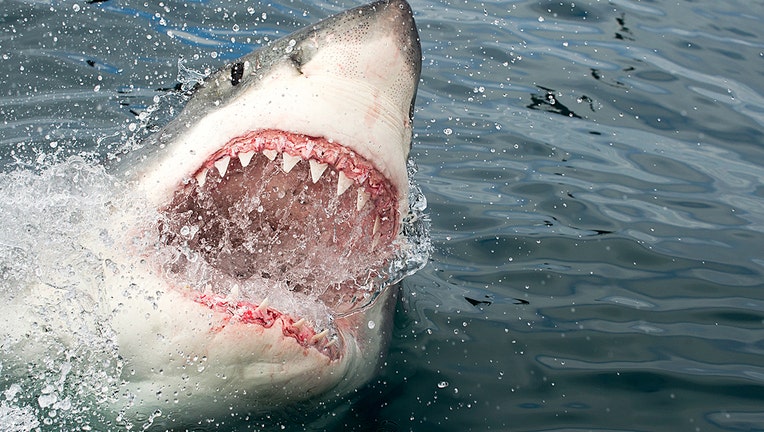How to reduce the risk of a shark attack

(Daniel Botelho / Barcroft Media / Barcroft Media)
All it took for American theater audiences to be terrified of shark attacks was a score of two ominous notes.
And yet, while John Williams' 1975 "Jaws" theme marked one for the history books, shark scientists outside of Hollywood have blamed the movie for unfairly stigmatizing and sensationalizing shark behavior.
Researchers have recently pushed for a rebranding; the term "shark attack" would be swapped with "negative encounter," "incident," or "bites," according to The Sydney Morning Herald.
Bites, they say, are largely extraordinarily rare, with data from the National Safety Council. U.S. Centers for Disease Control and Prevention and the Florida Museum of Natural History’s International Shark Attack File showing the likelihood of death risk over one's lifetime from a shark attack at 1 in 3,748,067.
Globally, there were around 129 alleged shark-human interactions in 2020, according to the ISAF.
57 of those interactions were "unprovoked bites" – 33 of which occurred in the U.S. and 16 of which were in Florida. 33 was 19.5% lower than the 41 incidents that occurred in the U.S. in 2019.
MORE NEWS: Florida breaks record with more than 21,000 new COVID cases
The yearly average of unprovoked bites is around 80 incidents.
Most of the bites were related to surfing, swimming and wading and the global total of bites was significantly lower than the 2015-2019 average last year, though the ISAF noted many could not maintain their typical level of involvement in the investigation due to the COVID-19 pandemic.
There were 13 shark-related fatalities, 10 of which were confirmed to be classified as unprovoked – a total higher than the annual global average of four.
ISAF said that despite the spike in fatalities, long-term trends show a decreasing number of fatalities and pointed out that variability in oceanographic, socioeconomic and meteorological conditions significantly influence these statistics.
MORE NEWS: As delta variant surges, Fauci warns more 'pain and suffering' ahead
Short-term trends, the organization said, still show both fatal and non-fatal bites to be decreasing.
But, the question remains: how can these "incidents" be decreased?
Sharks have been spotted up and down eastern shores in the last couple of weeks, potentially nipping a New York lifeguard and a tenured Georgia surf instructor.
There are three kinds of unprovoked shark attacks including "hit and runs," "bump and bite" and "sneak" attacks.
TRENDING: Massive alligator shows up at front door of Florida home, tries to meet neighbor's dog
Most of these attacks occur close to the shore and swimmers are mistaken for food or flashy jewelry is mistaken for shiny fish.
To stay safe and minimize risk, swimmers can follow several useful guidelines and instructions.
People entering ocean waters should make sure to swim with a friend during sunlight hours, remain close to shore, avoid schools of fish and water containing sewage, leave jewelry at home and make a conscious effort not to splash around and not allow pets in the water.
Sharks are able to identify contrasting colors and swimmers are advised to avoid bright-colored apparel.
TRENDING: PHOTOS: Kids swim in flooded streets at Disney's Magic Kingdom
Sharks can also smell particularly well – finding their prey from hundreds of yards away – and blood from an open wound or menstruation could be detected by a shark, though the majority of shark attacks happen to men.
Other tips may seem self-explanatory, including following signage and the instructions of lifeguards, not entering the water if sharks are known to be present.
If it's too late and a shark attacks, the Florida Museum of Natural History recommends a "proactive response," including hitting a shark on the nose, clawing at its eyes and gill openings and acting decisively and aggressively.
According to the ISAF, the general rule is to "Do whatever it takes to get away!"
Get updates on this story from FOXNews.com.

